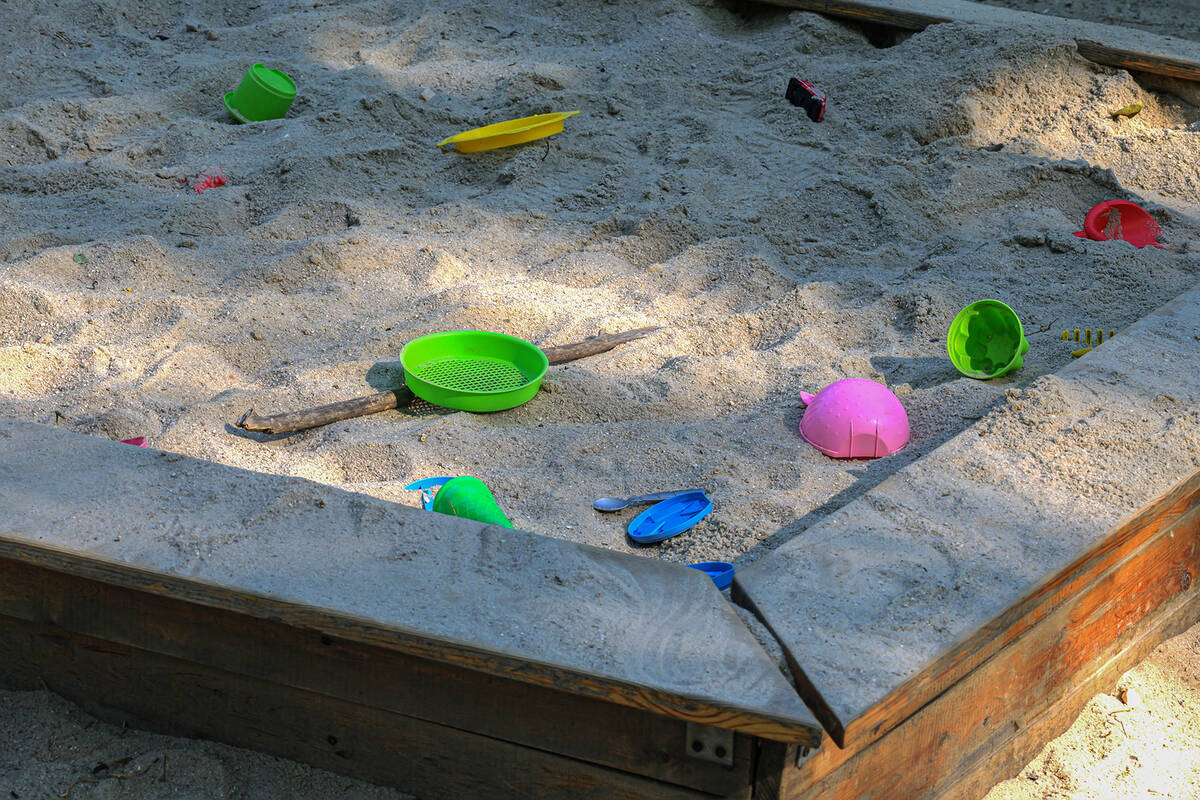Reinforce corners when building backyard sandbox
Q: We have some grandchildren who visit occasionally and we would like to build a sandbox for them. I don’t imagine this is too difficult, but I would like some advice on the procedure.
A: Building a sandbox is a nice project except for two things: First, hauling all of that sand can cause you to break into a sweat, and secondly, besides your grandkids playing in the sandbox, every neighborhood cat will love it, too — although the felines won’t necessarily be “playing” in it.
You can build the sandbox out of lumber to form the sides, but you will have to reinforce the corners, as there will be lots of pressure on them to come apart. Even though the wood will be in direct contact with the ground, don’t use treated lumber as the chemicals in that material can be hazardous to children. By the time the lumber starts to weather, your grandkids will be more interested in comic books and Little League anyway.
Plan on building the box so that the finished dimensions are 4 by 4 feet. Use 2-by-12-inch pieces of lumber and don’t miter the corners. When you have the lengths of the side walls cut, nail each corner using galvanized nails (2½-inch or 3-inch nails work well). Hit three nails into each corner. The frame will be fairly stiff, but we want it really stiff.
Cut a 4-by-4-foot post into 12-inch lengths and install one in each corner by placing it inside each corner and nailing it with three nails through each side of the frame. Make sure each corner is at 90 degrees and nail away.
Finally, you will cut four right-angle triangles with legs 14 inches long. Place a triangle in each corner and align it with the 90-degree frame and nail it into place. Aside from providing more support at each corner, these triangles act as a seat for the grandkids to sit on (or as a perch for the cats to plan their next attack).
Once the box is finished, you can level the area where it’s going to be installed. Set the frame into place and lay down some landscape fabric so that water can drain away and weeds won’t take over the sandbox.
Now you can add the sand. Use only clean sand specifically made for sandboxes. You can buy 50-pound bags of “play sand” at a home improvement center or you can have a dump truck deliver it.
It’s cheaper to have a truck deliver it in bulk, but then you have to get access to a wheelbarrow and clean up the driveway afterward. If you buy the sand in bags, just drop a bag into the frame, split it open with a shovel and pull out the bag.
Don’t fill the frame to the very top since the grandkids will easily spill the sand over the side. In fact, you might want to make it a little challenging for them to do this.
Finally, it’s a good idea to cover the sandbox when not in use. You can throw a tarp over it or, for a nice look, you can cut a piece of lattice and cover it. The lattice is more expensive than a tarp, but it won’t blow away and it won’t make your backyard look like a trailer park.
Mike Klimek is a licensed contractor and owner of Las Vegas Handyman. Questions may be sent by email to handymanoflasvegas@msn.com. Or, mail to 4710 W. Dewey Drive, No. 100, Las Vegas, NV 89118. His web address is www.handymanoflasvegas.com.
Do-it-yourself
■ Project: Making a sandbox
■ Cost: Under $100
■ Time: Half-day
■ Difficulty: ★★★























